Axolotls, also known as Mexican Walking Fish, are rare aquatic amphibians that are very pretty in appearance. They are not very popular as pets in your typical household aquarium. But, having one in your household may make it one of the coolest aquariums in your neighborhood. These creatures look like a mix between fish and salamanders and have a variety of body colors.
However, axolotls are very delicate to handle. Their skin does not have any proper protective layers like that of a fish. They have a small layer on their skin, but it provides little to no protection. This makes them very susceptible to damage and bacterial infections.
You know all this, but you still have the urge to hold your pet amphibian. Well, should you?
In this article, we will find out whether it is alright to touch an axolotl, as well as the consequences of coming into contact with it directly.
Can I touch an axolotl?
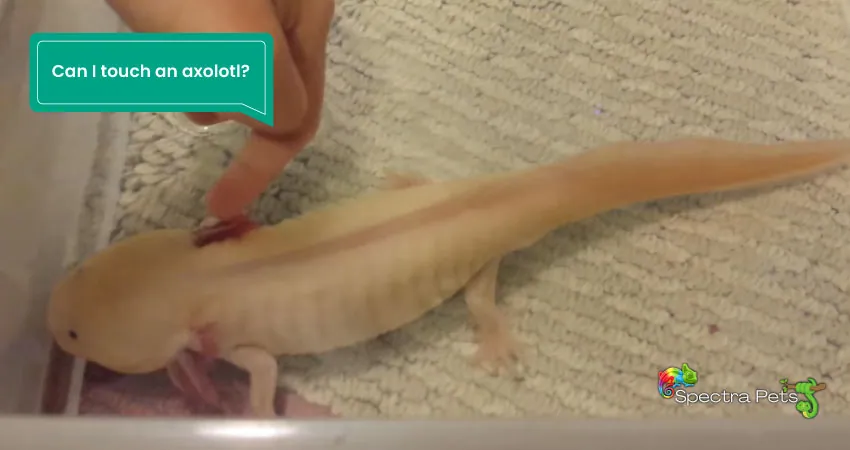
Absolutely! It is definitely possible to touch an axolotl. However, keep in mind that these are very delicate creatures, and applying even the slightest force may injure them.
There are some things to take note of while touching these goofy amphibians. Read the next sections to learn more.
Things to remember when touching an Axolotl
Before coming into direct contact with an axolotl, here are two things you absolutely need to keep in mind :
- Remember to thoroughly wash your hands. As humans, we all come in contact with many different germs and bacteria while living our daily lives and doing what we must do. Although we are not immediately harmed by them, your Axolotl will probably become sick pretty quickly, as they are really fragile and vulnerable to diseases.
- Make sure you don’t come in contact with its head and the gills. The gills in particular are extremely vulnerable to bacterial infections because they are completely exposed to the outside of the amphibian’s body. These two body parts are the most delicate parts of the animal.
If you want to touch or pet your axolotl, you need to proceed very carefully. Let’s have a look at how to touch an axolotl.
How do you touch an Axolotl?
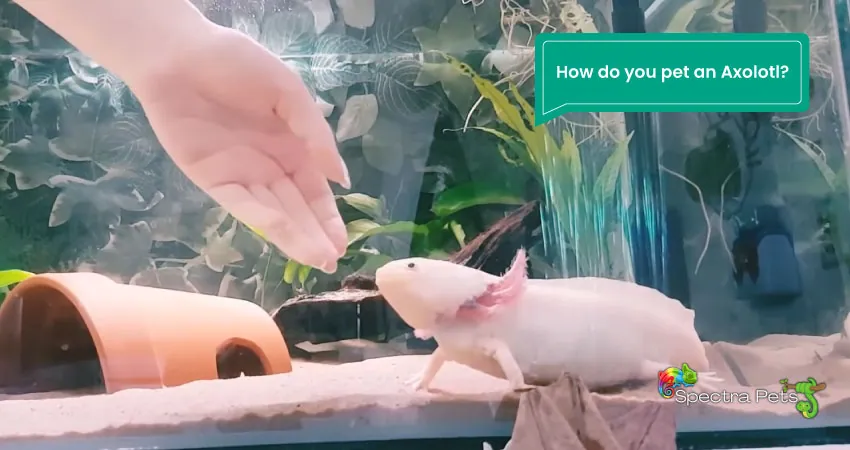
If your axolotl is brand-new, then it will take some time for it to adjust to its new surroundings. Your initial approach should be as gentle as possible.
You can begin by putting your hand inside the tank. Wait until the axolotl interacts with it. Sometimes the axolotl will come up to your hand and lay itself on it. If this happens, the animal is friendly by nature and will get accustomed to you and its new surroundings pretty quickly.
If the amphibian happens to not come into contact with you by itself, then you can begin by touching the tail or the belly. Remember to be as gentle as possible and not to overdo it. Do not move too quickly. Moving too fast will induce stress in the animal as it adjusts itself to the new environment. In such a case, it will try to escape and take shelter from you.
If your axolotl isn’t interacting, don’t rush it. Just wait patiently and go slow every day until it gets used to you.
Can you hold Axolotl?
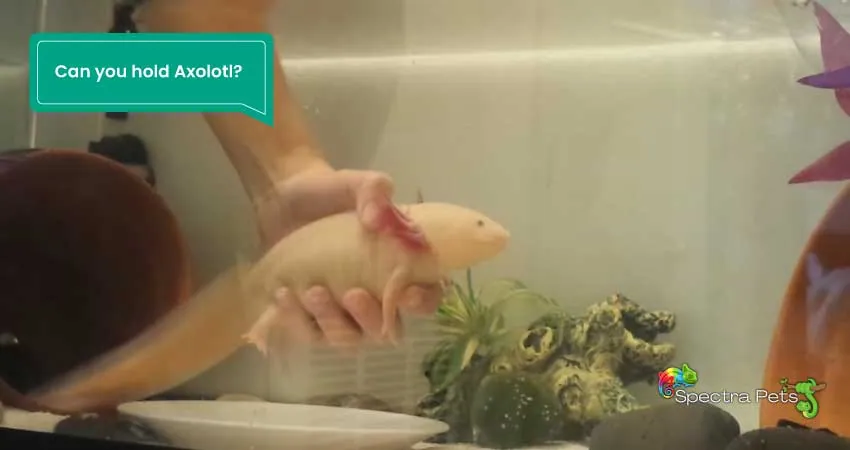
Yes, you can definitely hold an axolotl. However, you absolutely should do this only for a brief period of time. I recommend holding them for no longer than 1-2 minutes, and keeping the interactions as brief as possible.
Axolotls, as I’ve already mentioned, are extremely vulnerable due to their skin’s direct exposure. Because their skin offers no protection at all, they are very susceptible to catching various diseases. In addition, their skin is extremely thin and easily torn or ripped. This is a major reason behind their listing as “critically endangered”.
Can you grab an Axolotl?
You’ll need to find a way to grab your axolotl, so you can move it from one location to another, like switching aquariums. Don’t just go in like a headless chicken! Instead, attempt to pick it up from the underside by putting your hand underneath its torso and in between its two pairs of legs. Do not use excessive force and be as gentle as possible as it might damage the skin of the amphibian.
I’ll provide you with an easier way of grabbing it. Use a bowl!
Can I take my Axolotl out of the water?
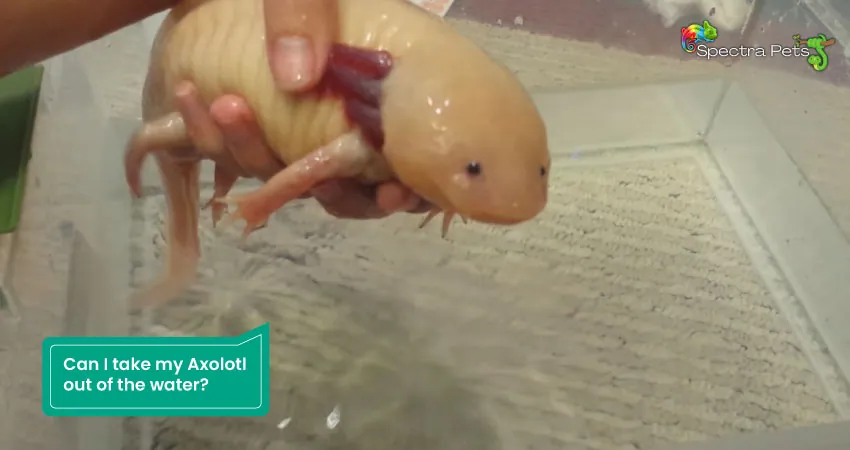
As amphibians, axolotls have both gills and lungs as part of their anatomy. You can definitely take them out of the water, but I recommend doing so only when it’s absolutely necessary, such as switching them to a different tank.
An axolotl can survive for up to 60 minutes without water, given that the environment is moist and damp. If it stays outside for too long, it will start losing moisture and dry out, leading to its demise.
How do you pet an Axolotl?
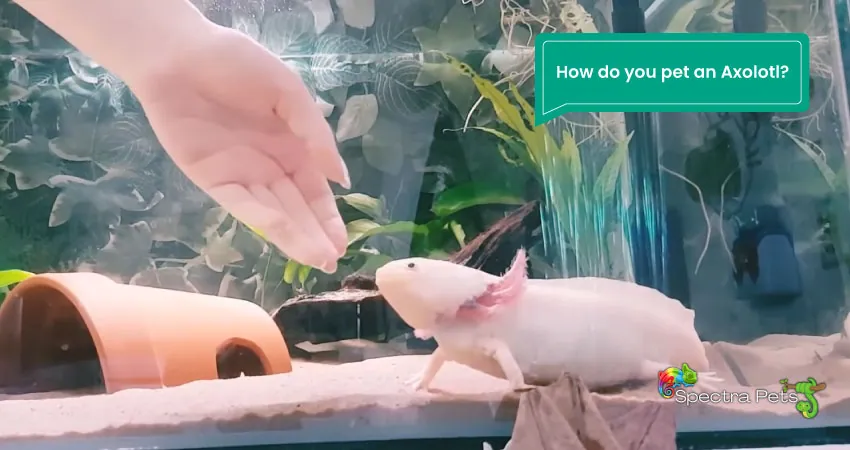
Although it is not recommended, you can pet your axolotl if you absolutely want to.
Wash your hands before you start interacting with your pet. Be very gentle with your approach, as hurrying up will induce stress in the animal. Give in small, gentle strokes. Do not stroke for an extended period of time, as you may damage the skin.
As I’ve mentioned earlier, avoid touching the head and the gills. Axolotls don’t like being touched on the head at all.
Do Axolotls like being picked up?
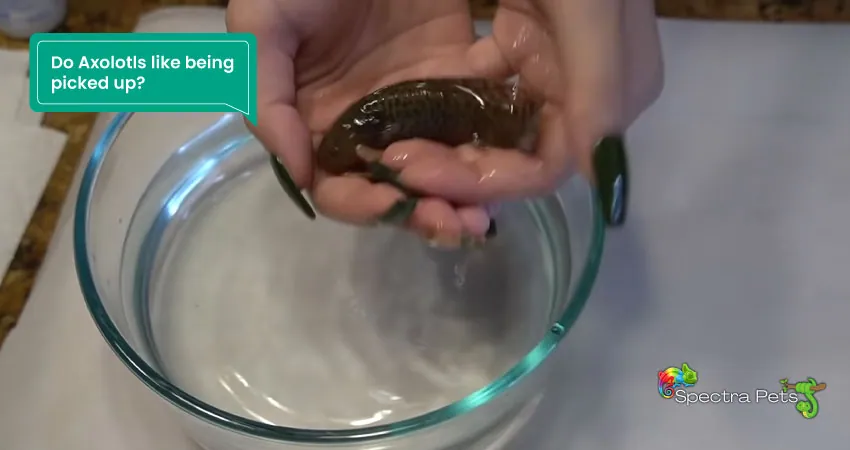
Well, this mostly depends on the individual amphibian. Some axolotls are calm by nature and won’t resist being picked up, while others may show stressful behavior.
Do Axolotls bite?
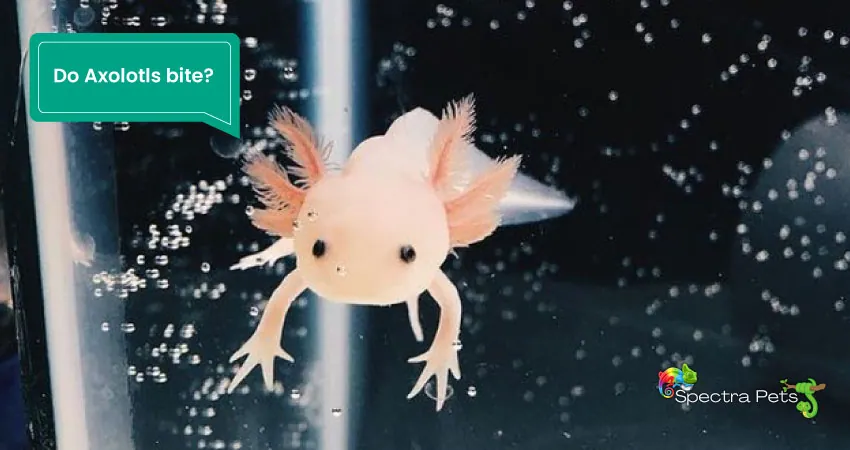
A few axolotls actually do bite. There may be two probable causes for an axolotl biting you. First, it might have mistaken you for food. Additionally, it’s possible that you stressed it out, making it feel threatened. As a result, it may have bitten you to defend itself.
Do Axolotl bites hurt?
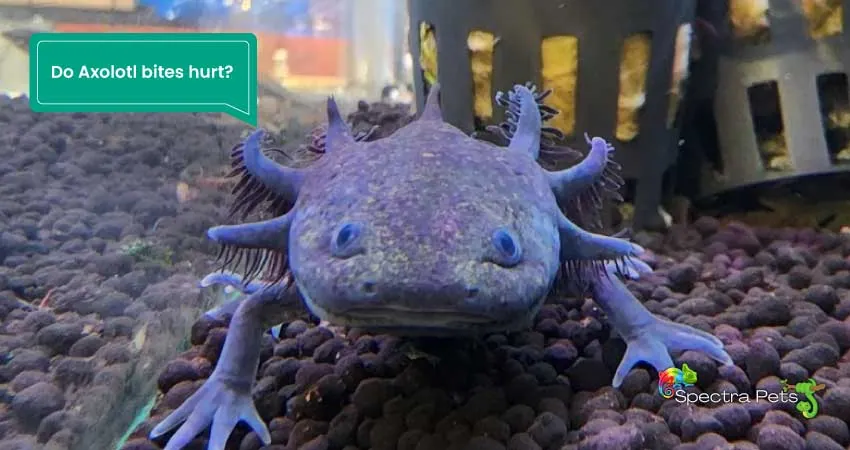
Not at all! Their teeth are not sharp enough to gnaw into your flesh. That’s why a lot of pet owners like to play with their axolotls by putting their fingers in the water. After biting into the fingers, thinking they were worms, the axolotl will realize it cannot swallow them and will give up. This is a unique way to interact with your pet amphibian!
Finishing Up
I know you want to touch and play with your axolotl. They look goofy, and everyone loves goofy pets. Well, there are other ways of playing with your axolotls other than touching them. You can have a fun time interacting with them while feeding.
